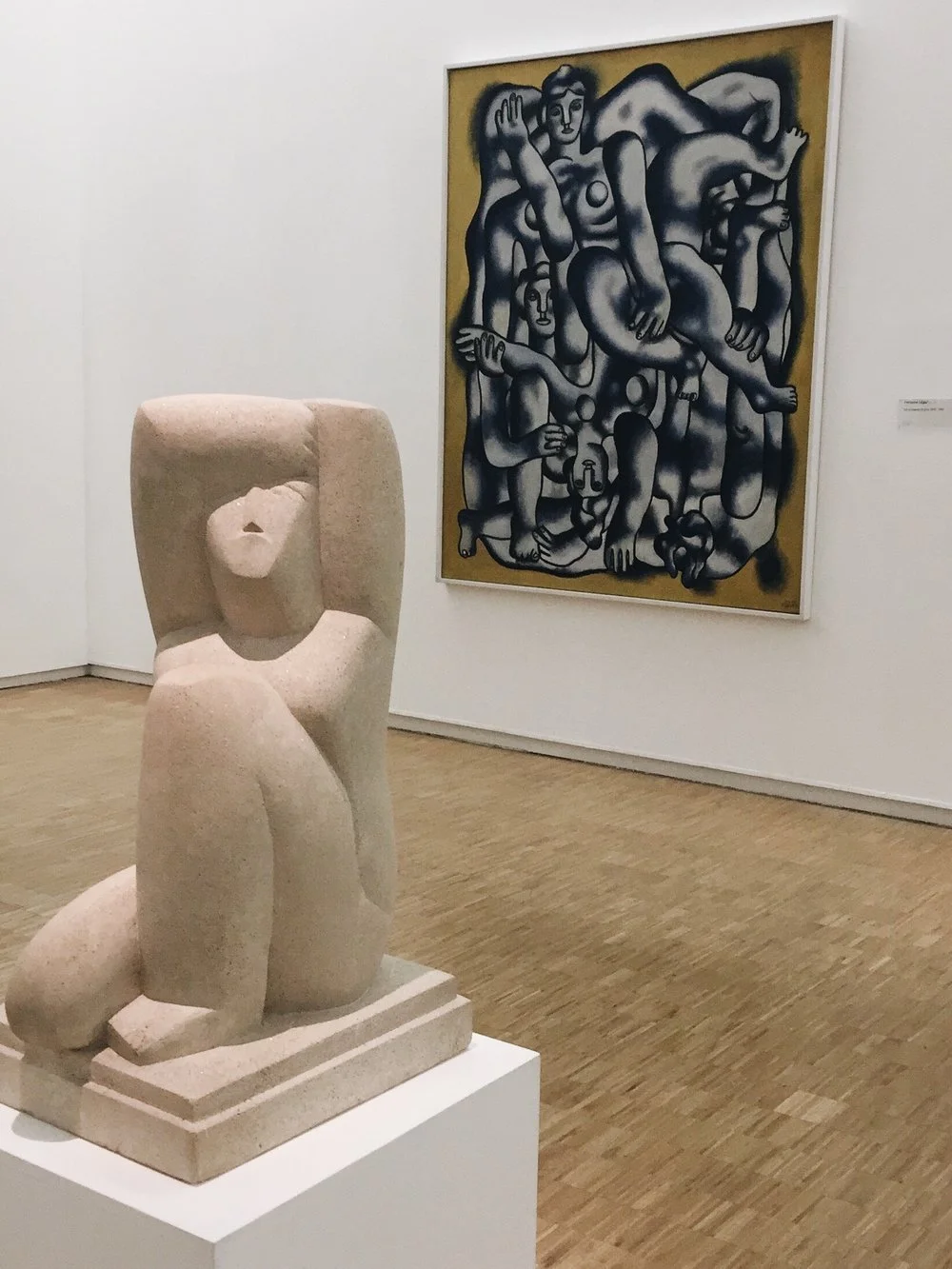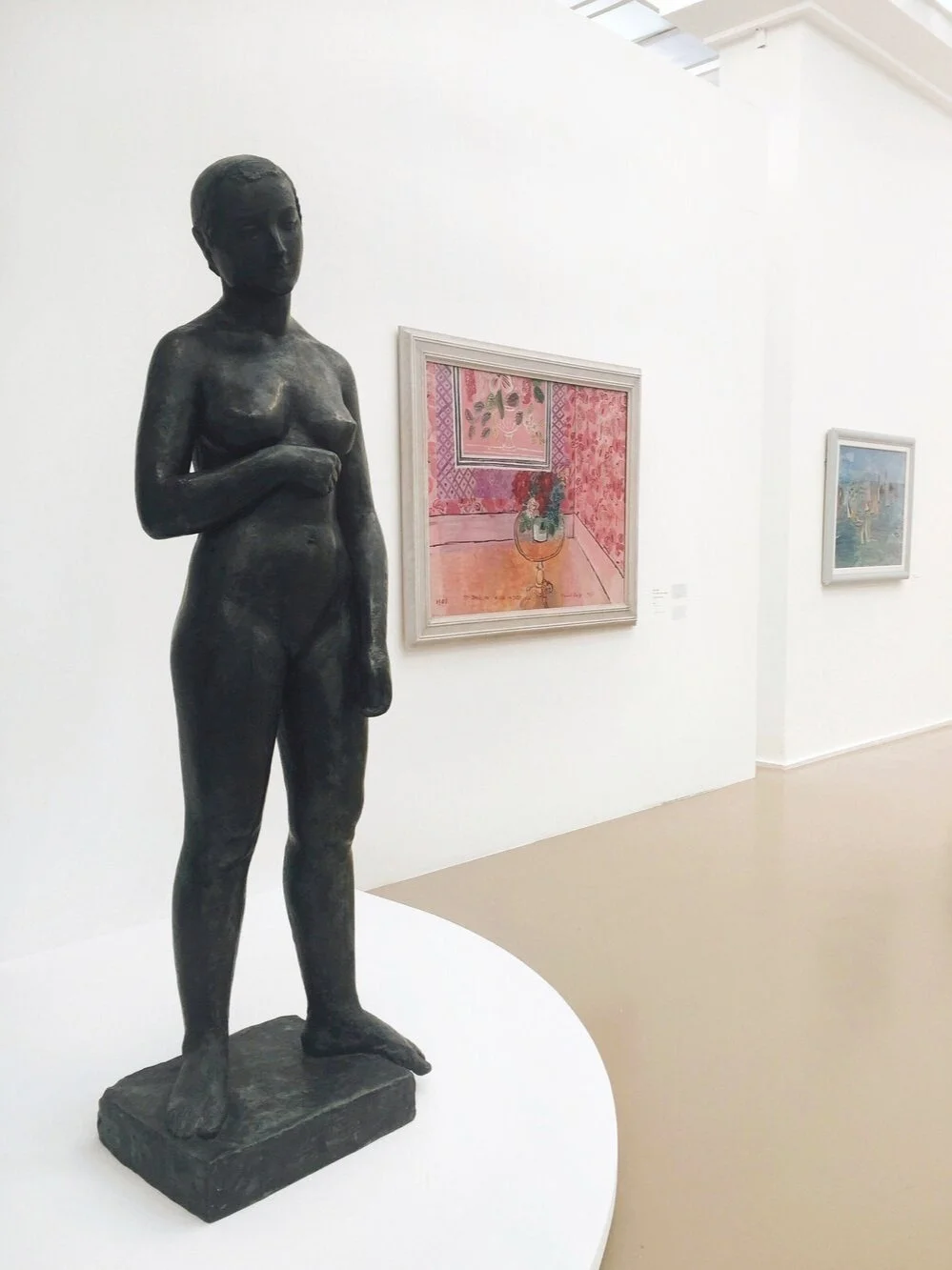Museum Review: Musée de l'Orangerie
Right by the Seine, sitting within the Tuileries Gardens, is the Musée de l’Orangerie. The museum features mainly 19th and 20th century art. It is smaller than the Musée d’Orsay (which displays works from around the same period), but is still among the most popular museums and tourist destinations in Paris. There are also rotating special exhibitions and a contemporary artist spotlight; but it is Claude Monet and the impressionist and post-impressionist works on display that have earned the museum its respected reputation. I finally took the time to visit the museum. Here are the highlights:
Permanent Collection
The museum is actually quite small, making it possible to see everything in one visit. There are two floors of art: one floor dedicated to Monet’s masterpiece (discussed below), and one floor featuring the permanent collection, the special exhibition, and a contemporary artist spotlight. I would suggest starting with the permanent exhibition. The paintings in the museum actually belong to the Jean Walter and Paul Guillaume Collection. The amassed collection features works from 1860s to the 1930s, collected mostly by Guillaume, which were then acquired by the French state.
The collection features 145 paintings and is divided by artist. Each section of the gallery is designated to a specific artist, and the wall text describes both the artists’ careers, as well as Guillaume’s history in the collecting of their work. Essentially, the collection does not aim to create a chronological visual timeline of 19th and 20th century art, instead it tells the story of the famed collector and his acquired works. The art historical context is there, but it is secondary. Some wall texts described why Guillaume liked certain artists, or how he acquired specific artworks. The artists featured include Paul Cézanne, Henri Matisse, Amadeo Modigliani, and Pablo Picasso. It was actually the first time I had seen a permanent collection from the point of view of the collector. Here were some works on display:
Claude Monet, La Cathédrale de Rouen. Le portail et la tour Saint-Romain, effet du matin
Top to bottom: André Derain, Nature morte au verre de vin. André Derain, Melon et fruits
Paul Cézanne, Fleurs dans un vase bleu
Pablo Picasso, Femme au tambourin
Les Nymphéas
The upper floor accommodates the Musée de l’Orangerie’s most famous feature: Claude Monet’s Les Nymphéas [Water Lilies in English]. I would suggest making this the floor the last stop of your visit, as anything seen afterwards will be underwhelming in comparison. The display consists of two oval rooms, and features eight of Monet’s massive water lily murals (four murals per room). Viewing the paintings is like standing inside of an impressionist panorama.
Technically, Les Nymphéas is a series of around 250 paintings by the artist. Monet often painted subjects/locations over and over again, sometimes over a number of years. He used impressionism to experiment with light, time of day, weather, seasons, etc. His water lily paintings are currently exhibited all over the world, and I’ve in fact seen his large scale water lily paintings at the Museum of Modern Art in New York. However, something about the way the paintings are displayed in the Musée l’Orangerie takes his work to a new level. It was honestly breathtaking. The galleries are flooded with natural light, and the refined curved white rooms are the perfect backdrop for Monet’s impressionist interpretation. It was very crowded during my visit, and I still fully enjoyed the murals. Nonetheless, I can only imagine experiencing the rooms alone on a quiet morning.
The work is contemplative and calming, yet at some points dark and abstract. What I love about this work is that its aesthetic beauty legitimizes both the power of nature and the technicality of abstraction. I was unable to get a full panoramic photo because of the crowds, but regardless, no photos could do it justice. Here are some details of the murals:
















